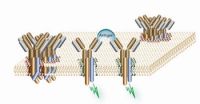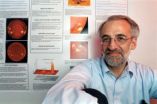(Press-News.org) CHAPEL HILL – A clinical trial designed to replace the genetic defect causing the most common form of muscular dystrophy has uncovered an unexpected aspect of the disease. The trial, based on therapy designed by scientists at the University of North Carolina at Chapel Hill School of Medicine, showed that some patients mount an immune response to the dystrophin protein even before they have received the gene therapy.
The puzzling results, which came from trials at Columbus Children's Hospital in Ohio, suggest that the immune systems of a number of patients -- once thought to be completely devoid of the dystrophin protein -- are actually primed by the prior existence of tiny amounts of this important component of muscle.
Published this week in the New England Journal of Medicine, the study demonstrates how such careful and critical observation in early clinical trials of new therapies can yield new insights into the causes of even the "simplest" single gene disorders.
"These findings are going to be studied intensely going forward, and should help us to understand how to better tailor our treatment approaches to suit the patients' needs," said study author R. Jude Samulski, professor of pharmacology and director of the Gene Therapy Center at UNC.
Duchenne muscular dystrophy is a genetic disease that begins in early childhood, causes progressive muscle weakness, and usually leads to death by the age of twenty from respiratory or cardiac muscle failure. The illness, which primarily affects boys, occurs when a gene on the X chromosome fails to make the essential muscle protein dystrophin. Currently, the best medical therapy can only slow its progression.
The use of gene therapy to correct such single gene disorders has been explored for over two decades and has been met with a number of challenges. In the case of muscular dystrophy, the dystrophin gene is far too large to fit into the typical virus used to carry it into the patient's cells. So collaborator Xiao Xiao, PhD from UNC Eshelman School of Pharmacy engineered a smaller yet functional version of the gene – called a minigene – to place within the viral carrier. His virus of choice was adeno-associated virus or AAV, a small virus that most humans are exposed to at some point in life.
In the first trial of this form of gene therapy, which began in 2006, six boys with muscular dystrophy received the virus containing the dystrophin minigene. A phase I trial, the goals of the study were to assess the efficacy and safety of the new approach. The replacement genes were injected into the bicep in one arm and a placebo was injected into the other arm of each of the patients.
The researchers found that the immune response to the gene varied from patient to patient, perhaps in part because the patients harbored different amounts of "revertant" dystrophin fibers, fibers that have escaped the fate of their mutation. Further studies are needed, but this finding suggests that some patients may benefit from immunosuppression prior to receiving gene therapy.
"We can now use this new information to adapt our approach to make gene therapy more likely to succeed," said Samulski. "Right now we are searching for a way to cure this disease, not just care for it, but truly cure it. So we realize that this effort is going to be an iterative process, with the accumulation of a number of lessons along the way to help us succeed."
One lesson from this study suggests that keeping a close eye on the immune-response profiles of patients could help to enhance the success of not just gene therapy, but also other therapies aimed at restoring dystrophin activity.
INFORMATION:
The research was funded in part by the Muscular Dystrophy Association and UNC startup biotech company Asklepios BioPharmaceutical Inc. Study co-authors from UNC include Dawn Bowles, PhD; Steven Gray, PhD; Chengwin Li, PhD; and Xiao Xiao, PhD.
First clinical trial of gene therapy for muscular dystrophy lends insight into the disease
2010-10-07
ELSE PRESS RELEASES FROM THIS DATE:
BLADE software eliminates 'drive-by downloads' from malicious websites
2010-10-07
Insecure Web browsers and the growing number of complex applets and browser plug-in applications are allowing malicious software to spread faster than ever on the Internet. Some websites are installing malicious code, such as spyware, on computers without the user's knowledge or consent.
These so-called "drive-by downloads" signal a shift away from using spam and malicious e-mail attachments to infect computers. Approximately 560,000 websites -- and 5.5 million Web pages on those sites -- were infected with malware during the fourth quarter of 2009.
A new tool that ...
Psychologist finds 'shocking' impact on name recall
2010-10-07
It's an experience shared by everyone: You run into someone you know, but his or her name escapes you.
Now, Temple psychologist Ingrid Olson has found a way to improve the recall of proper names.
Olson dedicates her research to understanding human memory. In a recent study, she found that electric stimulation of the right anterior temporal lobe of the brain improved the recall of proper names in young adults by 11 percent. Her study appears this month in the journal Neuropsychologia.
"We know a lot about how to make people's memory worse, but we don't know very ...
New fish feeds made from fish byproducts
2010-10-07
Fish byproducts may be a new source of fish feed, thanks to research by U.S. Department of Agriculture (USDA)-funded scientists in Hawaii.
Research scientist Dong-Fang Deng and her colleagues with the Oceanic Institute in Waimanalo, Hawaii, are collaborating with USDA food technologist Peter Bechtel to develop the new fish feeds. Bechtel is with the USDA Agricultural Research Service (ARS) Subarctic Agricultural Research Unit in Kodiak, Alaska. ARS is the USDA's principal intramural scientific research agency.
The scientists are taking fish parts that would normally ...
One lock, many keys
2010-10-07
In order to track down pathogens and render them harmless, the immune system must be able to recognize myriad different foreign substances and react to them. Scientists at the Max Planck Institute of Immunobiology and the Centre for Biological Signalling Studies BIOSS at the University of Freiburg have discovered how the immune system's B-cells can be activated by numerous substances from our environment. The receptor molecules on the surface of the B-cells are only activated when the receptor subunits separate following the binding of foreign substances. These findings ...
$5 million NSF grant will upgrade and expand NJIT radio telescope array
2010-10-07
A $5 million National Science Foundation (NSF) grant to upgrade and expand a set of radio frequency antennas at Owens Valley Solar Array (OVSA) http://www.ovsa.njit.edu/ has been awarded to NJIT. The new facility is expected to help scientists better understand the nature of solar flares which greatly interest government, industry and the military.
"Space weather incidents such as coronal mass ejections and solar flares can cause problems with cell phone reception, GPS systems, power grids and other technologies," said NJIT Distinguished Professor Dale Gary, a world-renowned ...
Experts advocate realigning type 2 diabetes treatments with disease's natural history
2010-10-07
Chevy Chase, MD— A new consensus statement published in the September, 2010, issue of The Endocrine Society's Journal of Clinical Endocrinology & Metabolism (JCEM) finds that the increasing recognition that beta-cell failure occurs much earlier and severely than commonly believed suggests that regular glycemia screening, early identification of patients at metabolic risk and prompt and aggressive intervention deserves greater emphasis.
The consensus statement is based on the findings of a working group of basic researchers, clinical endocrinologists and primary care ...
New findings pull back curtain on relationship between iron and Alzheimer's disease
2010-10-07
BETHESDA, Md., Oct. 6, 2010 – Massachusetts General Hospital researchers say they have determined how iron contributes to the production of brain-destroying plaques found in Alzheimer's patients.
The team, whose study results appear in this week's Journal of Biological Chemistry, report that there is a very close link between elevated levels of iron in the brain and the enhanced production of the amyloid precursor protein, which in Alzheimer's disease breaks down into a peptide that makes up the destructive plaques.
Dr. Jack T. Rogers, the head of the hospital's neurochemistry ...
Long-extinct passenger pigeon finds a place in the family tree
2010-10-07
CHAMPAIGN, Ill. — With bits of DNA extracted from century-old museum specimens, researchers have found a place for the extinct passenger pigeon in the family tree of pigeons and doves, identifying for the first time this unique bird's closest living avian relatives.
The new analysis, which appears this month in Molecular Phylogenetics and Evolution, reveals that the passenger pigeon was most closely related to other North and South American pigeons, and not to the mourning dove, as was once suspected.
Naturalists have long lamented that one of North America's most ...
Wistar researchers discover new class of objects encoded within the genome
2010-10-07
Despite progress in decoding the genome, scientists estimate that fully 95 percent of our DNA represents dark, unknown territory. In the October 1 issue of the journal Cell researchers at The Wistar Institute shed new light on the genetic unknown with the discovery of the ability of long non-coding RNA (ncRNA) to promote gene expression. The researchers believe these long ncRNA molecules may represent so-called gene enhancer elements—short regions of DNA that can increase gene transcription. While scientists have known about gene enhancers for decades, there has been no ...
UF study: Emotional effects of heavy combat can be lifelong for veterans
2010-10-07
GAINESVILLE, Fla. — The trauma from hard combat can devastate veterans until old age, even as it influences others to be wiser, gentler and more accepting in their twilight years, a new University of Florida study finds.
The findings are ominous with the exposure of today's men and women to heavy combat in the ongoing Iraq and Afghanistan wars on terror at a rate that probably exceeds the length of time for U.S. veterans during World War II, said UF sociologist Monika Ardelt.
"The study shows that we really need to take care of our veterans when they arrive home, because ...




